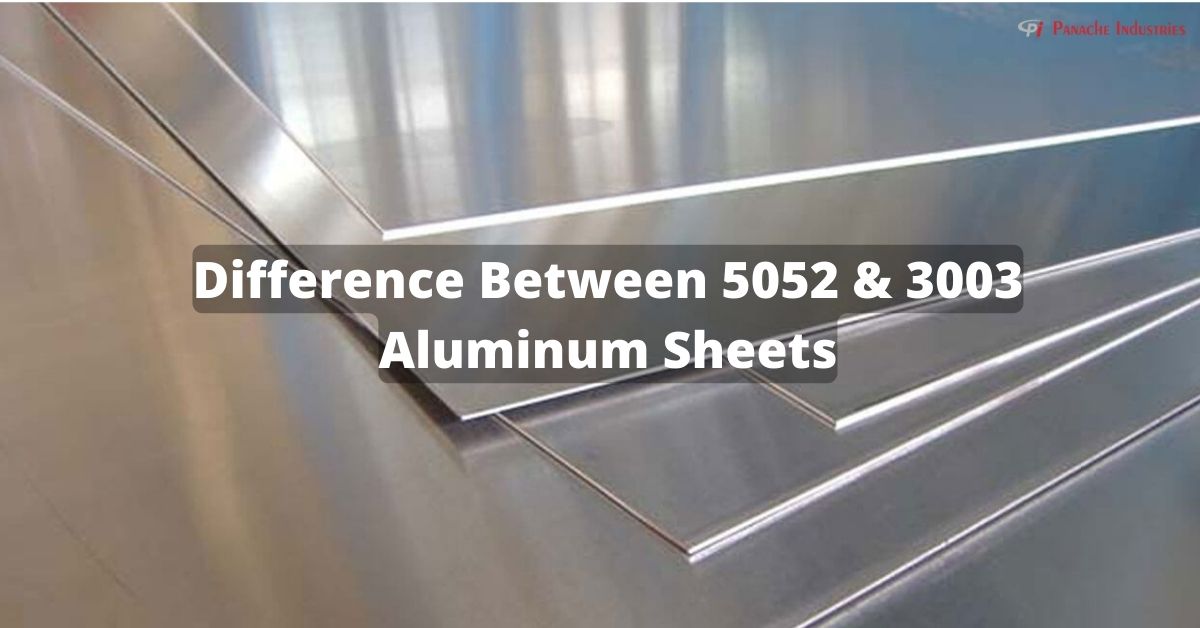What Elements Are 3003 and 5052 Aluminum Sheet Alloyed with?
3003 is largely alloyed with manganese, whereas magnesium is the principal alloy element in 5052. Overall, 3003 is a silicon, iron, copper, magnesium, and zinc alloy, whereas 5052 is a silicon, copper, manganese, magnesium, chromium, and zinc alloy. The percentage of alloying elements in each common alloy is shown in the table below.
What Are the Mechanical Properties of Aluminum 3003 and 5052 Sheets?
As the mechanical properties of 3003 and Aluminium 5052 Sheets demonstrate, minor changes in alloying composition have a significant impact on tensile strength. 3003 H14 has an ultimate tensile strength range of 20–26 KSI, a yield of 21, an elongation of 8.3%, and a Brinell hardness of 40, whereas 5052 H32 has an ultimate tensile strength range of 31–38 KSI, a yield of 28, an elongation of 12.3%, and a Brinell hardness of 60. See the table below to learn the mechanical properties of the two alloys.
What Is the Difference Between Forming and Fabricating?
In general, 3003 is rather soft with decent corrosion resistance, drawing, workability, moderate strength, and weldability, whereas 5052 is stronger with superior corrosion resistance, drawing, formability, greater strength, and weldability.
Aluminum alloy 3003, the most well-known and commonly used of the common alloys, has roughly 20% more strength than pure aluminum 1100 and is regarded as a very useful general-purpose aluminum for intermediate strength applications. It is typically chosen for its great workability and drawing qualities, as well as the fact that it can be welded and brazed using various processes and has excellent corrosion resistance.
5052 is the most commonly used non-heat-treatable sheet and plate. It is durable, sturdy, easily worked, and highly corrosion-resistant. It is one of the most useful alloys due to its adaptability and high value. It offers good drawing properties and a fast work hardening rate. It is often utilized in maritime applications due to its resistance to seawater corrosion.
Common Uses of Aluminum 3003 and 5052 Sheets
Cooking utensils, food containers, chemical equipment, pressure vessels, general sheet metal fabrication, hardware, tanks, and cabinets are all common applications for 3003 aluminum. Higher-strength sheet metal fabrication, appliances, vessels, tanks, automotive, marine, food service, and medical equipment are all common applications for 5052.
What are the prices for 3003 and 5052 Aluminum Sheets?
3003 is often slightly cheaper per pound, depending on availability and market conditions. The higher density of 3003 may, however, cancel out the lower price.
The Aluminum 3003 and 5052 Paradox
When analyzing 3003 and 5052 in greater depth, it is obvious that despite their chemical compositions appearing comparable, they are alloys with both significant similarities and variances. Even though 3003 and 5052 are recommended for various applications, such as culinary utensils and hydraulic tubes, they are interchangeable in many others, such as sheet metal work.


